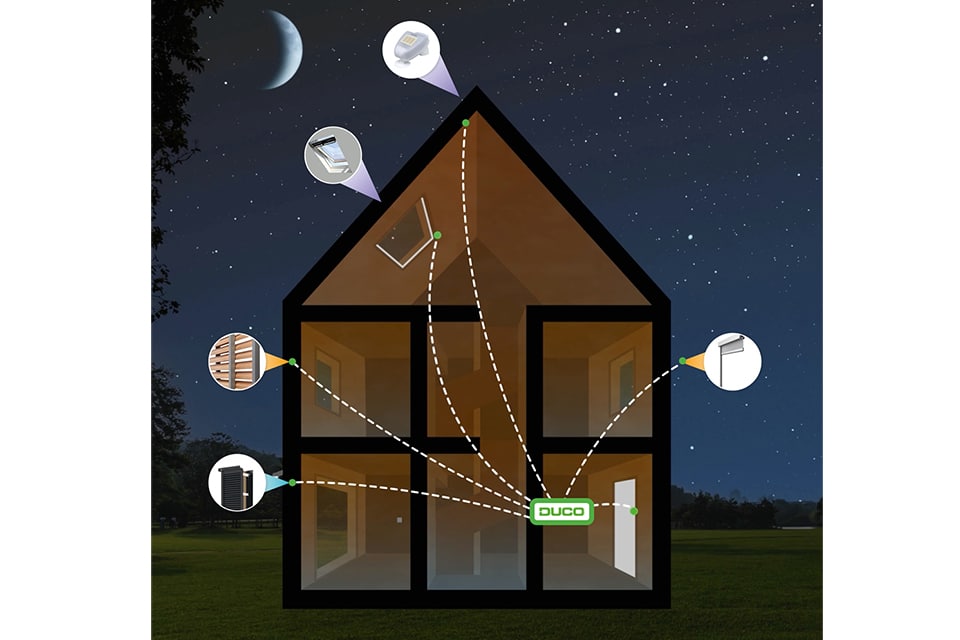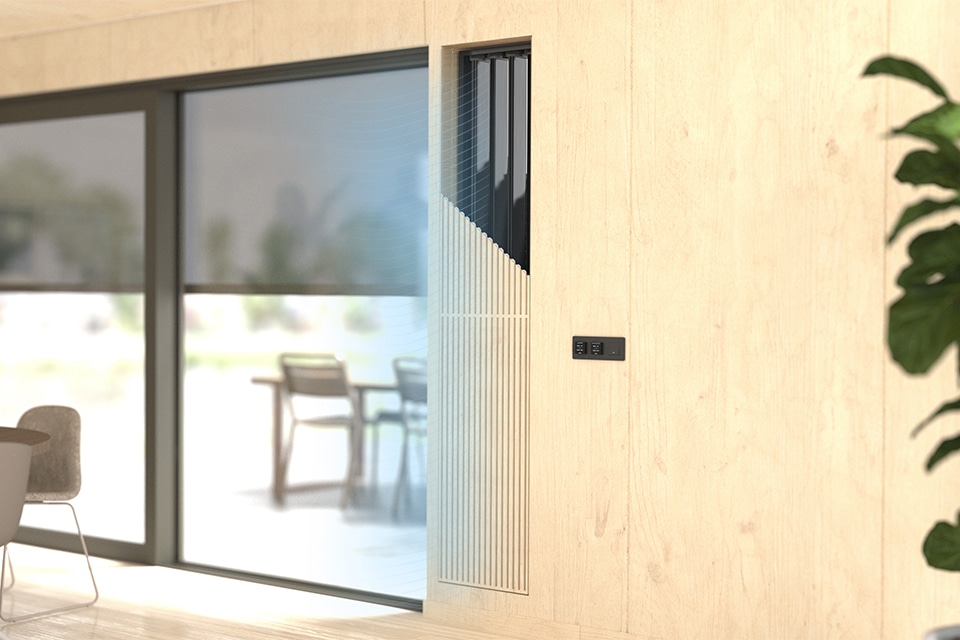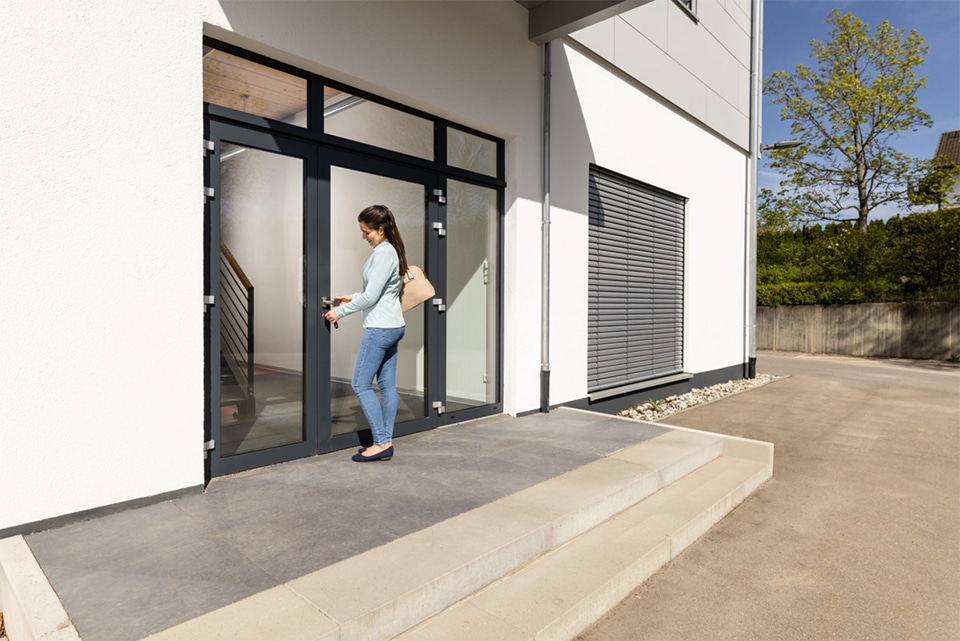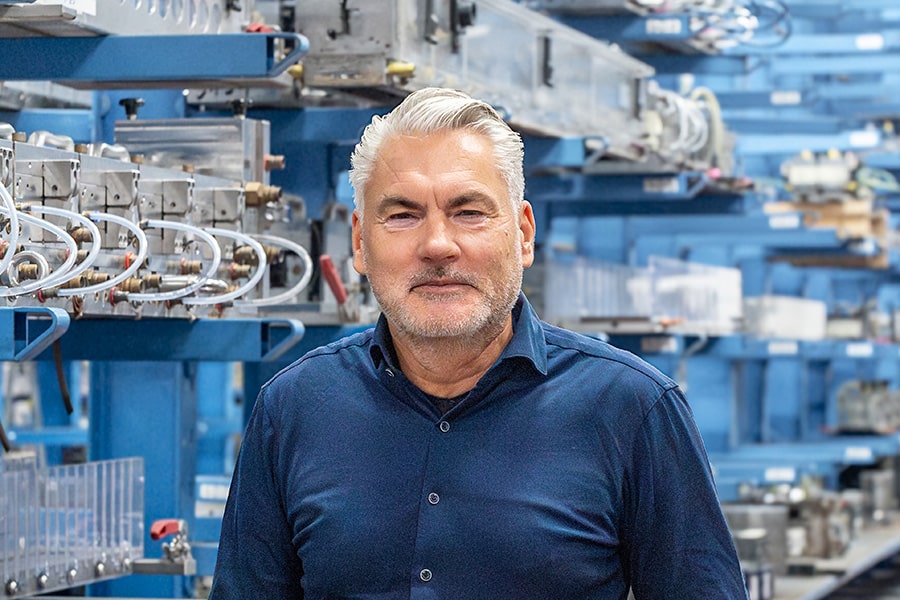
Climate impact & overheating:from problem to solution
The new reality: heat as a growing challenge
The Netherlands is facing a new climate reality. Where we used to have perhaps one tropical day per summer, by 2100 we may be facing 43 tropical days. This climate change will bring longer heat waves and higher temperatures. For the building industry, this means a fundamental shift in how we think about comfort in buildings.
The effects are already being felt. During the 2020 heat wave, mortality rose by 9%. People sleep worse, perform less and their health comes under pressure. At the same time, the number of air conditioners is exploding: from 2021 to 2030, we expect a threefold increase. This not only puts pressure on our power grid, but also goes completely against our sustainability goals.

The paradoxical problem of sustainability
Here arises a paradox that many professionals struggle with. It is precisely the preservation of homes - with better insulation, crack sealing and HR++ glazing - that increases the risk of overheating. A well-insulated home retains heat, both desirable (in winter) and undesirable (in summer).
TNO research clearly demonstrates this: homes with an Rc value of 4.5 can have up to 50% more exceedance hours than poorly insulated homes with unfavorable ventilation behavior. The combination of good insulation with lots of south- or west-facing glass, without adequate shading, creates greenhouse-sensitive indoor climates. This problem is exacerbated by the urban heat island effect. Cities can be 2-5°C warmer than the surrounding area, especially at night. For 50% of all Dutch homes, this means additional heat loads.

Regulations force action
The government has recognized this problem and is taking action. The TOjuli requirement (Temperature Exceedance Rate in July) for new construction is becoming increasingly stringent. The TOjuli indicator is a dimensionless number (with no unit) based on the ratio of cold demand to the rate of heat return. The limit value for TOjuli has been set at ≤ 1.20. Specifically, this means that designers and installers must think about heat prevention from the drawing board. The time of ‘we'll see’ is over. Projects that do not meet the TOjuli requirement will not receive a building permit.
Passive solutions: the first line of defense
The most effective approach starts with passive measures. Solar shading tops this list. Exterior blinds can block up to 80% of the heat gain through windows, while interior blinds block only 25%. But passive cooling goes beyond blinds alone. Ventilative cooling - the smart use of cool outdoor air - can keep a home 2-4°C cooler. This does require the right infrastructure: sufficient and strategically placed vents, preferably automated.
Installation solutions that work
For building professionals and installers, the opportunities lie primarily in optimizing natural ventilative cooling and combining it with shading. Three ventilation principles are effective:
- Single-sided ventilation works via temperature differential across the gable inlet. Cold air enters through the bottom of the gable inlet, warm air disappears through the top. Simple, but less effective than the other methods.
- Transverse ventilation through opposite facades is wind dependent but can be very effective. The challenge is in achieving sufficient openings in both facades.
- Chimney ventilation combines wall inlet with roof outlet and is the most stable. The temperature difference between inside and outside creates a natural draft that works independently of wind.
Discover DUCO's CrossFlow System
For active cooling, sustainable non-condensing cooling is a good option. These systems deliver water from 10-18°C and can be excellently combined with passive measures. Full air conditioning sometimes remains necessary, but should then be used as efficiently as possible.
Integrated smart solutions
At DUCO, we believe in an integrated approach where shading and ventilative cooling work smartly together. Our ‘Natural Cooling’ strategy combines three elements:
- Smart blinds that automatically respond to solar radiation
and temperatureu;
- Automated ventilative cooling via (night) vents and skylights;
- Intelligent control that optimizes both systems based on weather conditions.
This approach avoids the root causes of failure in natural cooling: users forgetting to operate blinds or open windows at the right time. Automation makes the system reliable and effective. Less sensible are solutions that focus only on one aspect. Just shading without ventilation options, or just extra vents without shading, lack the integral character needed for effective heat prevention.
Practical tips for installers
Identify risk factors early on: lots of glass on east/west/south, limited spui and urban locations require additional measures. Think integrally: always combine shading with ventilative cooling. One without the other is less effective.Automate where possible: residents do not always act optimally. Smart control dramatically increases effectiveness. Keep learning: technology is developing rapidly. Invest in climate adaptation knowledge and the latest solutions.
DUCO Natural Cooling System
The DUCO Natural Cooling System integrates solar shading (DucoScreen/DucoSlide) with ventilative cooling (DucoGrille Close 105, DucoGrille NightVent) via intelligent control. Sensors measure temperature and solar radiation. Based on these, the system determines when blinds close and ventilation grilles open. Advantages: energy-free cooling, automatic operation, burglar- and insect-resistant, weatherproof. The system can keep homes 3-5°C cooler without energy consumption for cooling.
Discover DUCO's Natural Cooling solutions
Conclusion: Climate change is forcing us to find different solutions. For installers and building professionals, this means new opportunities in a growing market. The question is not whether we will have to deal with heat problems, but when. Those who invest in knowledge and the right systems now will be ahead of the market.
Sources:
- DUCO Seminar ‘Climate Impact & Overheating’ (2025)
- Presentations Gerrit Hiemstra (Meteorologist) and Samuel de Vries (TNO)
- KNMI climate scenarios Netherlands
- TNO research ‘Heat in the Home’ (2024) - Hogeschool van Amsterdam
- RIVM mortality report heat wave 2020
Heeft u vragen over dit artikel, project of product?
Neem dan rechtstreeks contact op met DUCO.
 Contact opnemen
Contact opnemen


